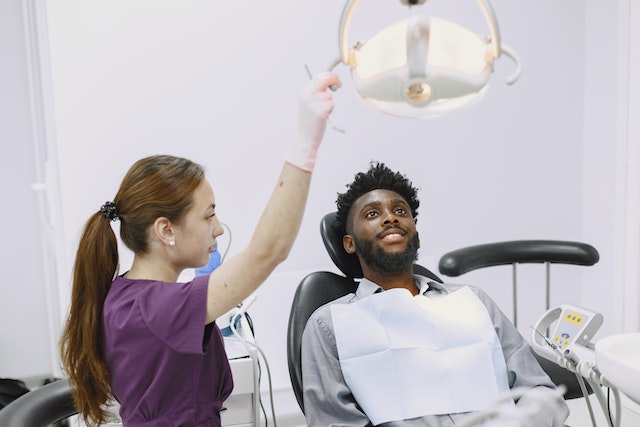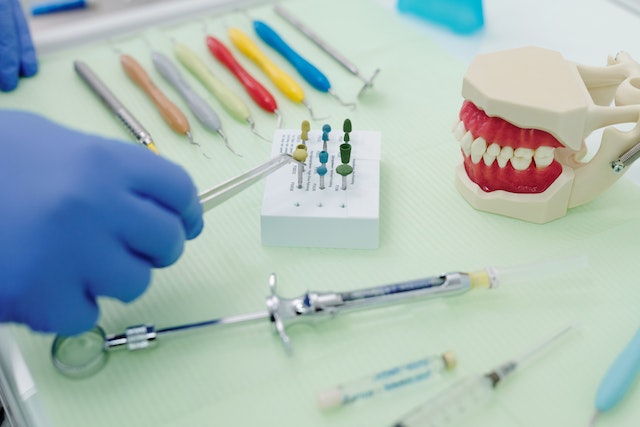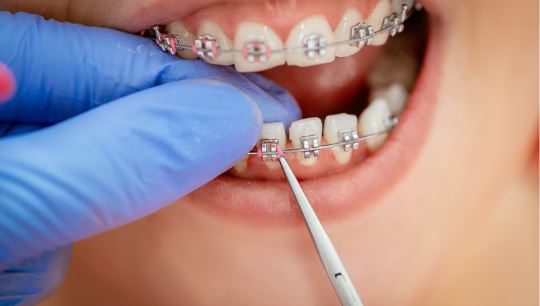How Long Do Braces Take?
Braces are a common form of orthodontic treatment that has enabled millions of people to achieve more aligned teeth and a more comfortable mouth. But many consider the average time of braces commitment necessary to wear braces before deciding whether or not it’s worth it. In this article, we’ll go over the various elements that go into determining how long a patient needs to wear braces and provide an estimated treatment time frame. Have you been searching for a straightforward method to improve the appearance of your teeth? If you live in or close to the Boston area, getting your teeth straightened with Boston Braces might take as little as six months.
An Overview of Braces

It is necessary to have a fundamental understanding of what orthodontic braces are as well as how they function before moving on to the question of how long-wearing braces will take. Braces are a type of orthodontic appliance used to realign teeth and jaws that are out of place. Brackets, wires, and rubber bands work together to gradually shift teeth into place by applying mild pressure.
Braces correct misalignment of teeth by gently moving them into place. This process requires time because the ligaments and bones that hold your teeth in place need to adapt to the new position of your teeth. This can take anywhere from a few weeks to several months. Therefore, you will need to wear braces for a considerable amount of time, potentially years.
Factors That Affect How Long Braces Take
The time it takes for braces to function can be affected by several variables. For example:
The Severity of Your Orthodontic Issue
One of the most important factors that can determine how long you need to wear braces is the severity of your orthodontic problem. Minor orthodontic problems, such as mildly crooked teeth, may only require six months to a year of wearing braces. However, if your problem is more serious, like an extreme overbite or underbite, you might need to wear orthodontics for two to three years, or even longer.
Your Age
Children and teenagers tend to respond faster to orthodontic treatment because their bones and teeth are still developing. It might take longer for adults to see the effects because their teeth and bones are more rigid than those of younger people.
Your Dental Health

How quickly your orthodontics straightens your teeth can be affected by your oral health. It’s possible that your orthodontic treatment will go more swiftly if your teeth and gums are in good shape. However, before beginning orthodontic therapy, you should have any preexisting dental problems, like cavities or gum disease, treated.
Your Compliance
Wearing your braces as instructed by your orthodontist can help you achieve the best possible results as quickly as possible. Treatment time can be extended if patients do not adhere to the prescribed regimen of regular brace usage and scheduled appointment attendance.
How Long Do Braces Take?
Now that you know what influences the length of time needed to complete orthodontic treatment, let’s examine how long you can anticipate wearing braces based on the severity of your orthodontic problem.
Minor Orthodontic Issues

Depending on the severity of your orthodontic problem, you may only need to wear braces for six months to a year. This is especially true if you only have mildly crooked teeth or minor gaps between your teeth. Your orthodontist will make minor adjustments to your braces during this period to guide your teeth progression into their final positions.
Moderate Orthodontic Issues
It is possible that you will need to wear braces for a period of time ranging from 18 to 24 months if you have a moderate orthodontic problem. This could include an overbite or underbite that is moderate in severity. Your orthodontist will make larger changes to your braces during this phase to move your teeth into place.
Severe Orthodontic Issues
Wearing braces can take anywhere from two to three years, or even longer if you have a serious orthodontic problem like an overbite or underbite. Your orthodontist will make adjustments to your braces regularly during this period to move your teeth into place. When adjusting your mouth, your orthodontist may also use rubber bands or headgear.
Your orthodontist may suggest splitting your therapy into two phases. For adolescents with severe orthodontic problems, this method is frequently used. The first step in the process involves the use of orthodontic tools, such as expanders, to make room in the mouth and direct the development of the jaws. In the second phase, the child will wear braces to align their teeth.
Adult Orthodontic Treatment

Orthodontic treatment is also beneficial for adults, though it may take longer than it does for children and adolescents. The seriousness of an adult’s orthodontic problem will determine how long they will need to wear braces. It is recommended that adults get cavities filled and gum disease treated before beginning orthodontic therapy.
Adults may have additional orthodontic therapy alternatives to metal braces. For instance, teeth can be straightened with the help of invisible braces like Invisalign. Adults who want a less obvious orthodontic solution often choose clear aligners because they are removable for dining and brushing.
Conclusion
If you take good care of your braces as directed by your orthodontist, you can increase your chances of getting the best possible outcomes and maintaining a beautiful smile for the rest of your life. Keep in mind that the path to a better smile with braces requires patience. So kick back, unwind, and take pleasure in the journey to a better, healthy you!







